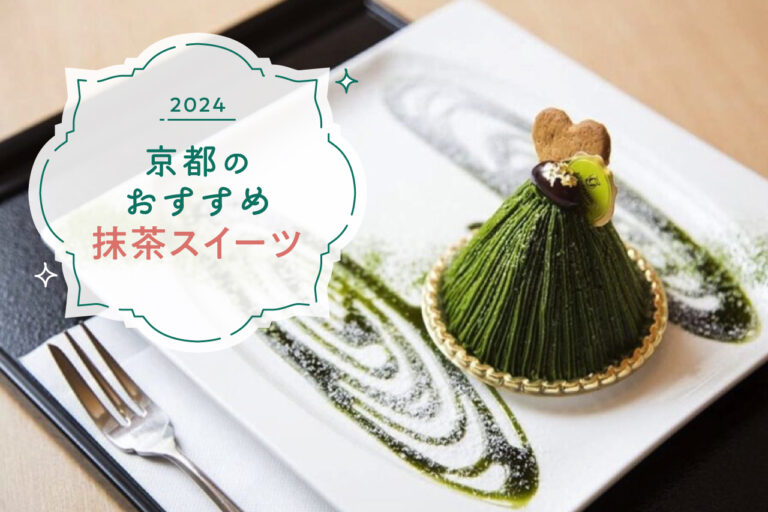
[2024] From long-established establishments to classic favorites! Kyoto's recommended matcha su...
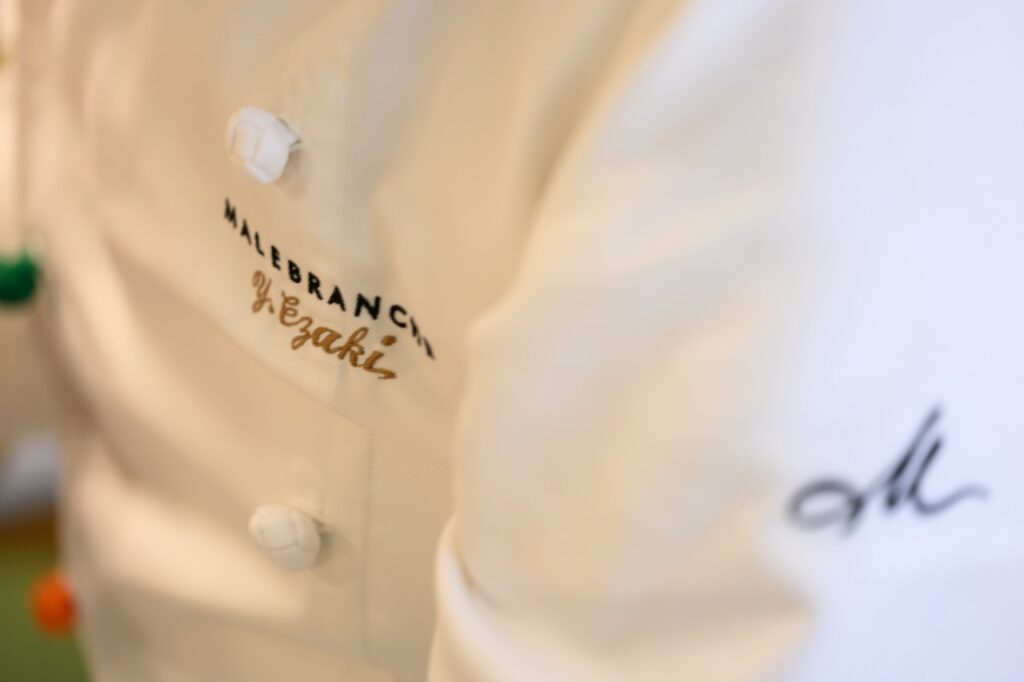

Launched in 2007, the "Cha no Kwa" dark tea Langdosha has become one of the most popular Kyoto souvenirs. How did this well-known Kyoto confectionery come into being and why has it become a long-seller? We asked Executive Chef Yasuhiko Ezaki and Marketing Department Manager Hirokazu Akita, the creators of "Cha no Kwa," about their thoughts on the product and the unknown story of its birth.
Please tell us about the beginning of Mar Blanche.
Mr. Akita: Our company actually began as a pure coffee shop that we opened shortly after World War II. The content of our business changed with the changing times, and it was 1982 when we opened the "Mar Blanche Kyoto Kitayamamoto Store". At a time when there were many Japanese-style confectionery stores and few full-fledged confectionery stores in Kyoto, we aimed to create "a confectionery store of exceptional quality" and created a store with an upscale feel.
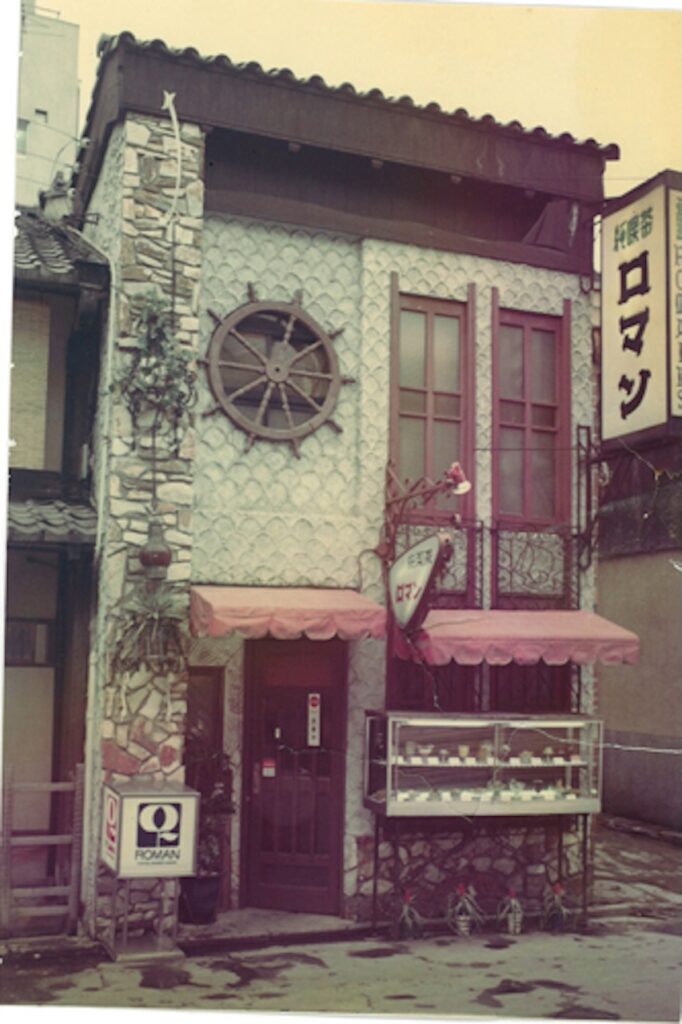
[The "Pure Café Romain," which was the beginning of "Mar Blanche.

Mont Blanc has been the store's signature product since the beginning. We developed the recipe by adapting the mont blanc we encountered in France, the home of the product, to the tastes of Kyoto residents. In Japan, yellow candied Japanese chestnuts were the mainstream, so mont blanc made with French marron paste attracted a lot of attention, and it is still a staple at "Mar Blanche" to this day.
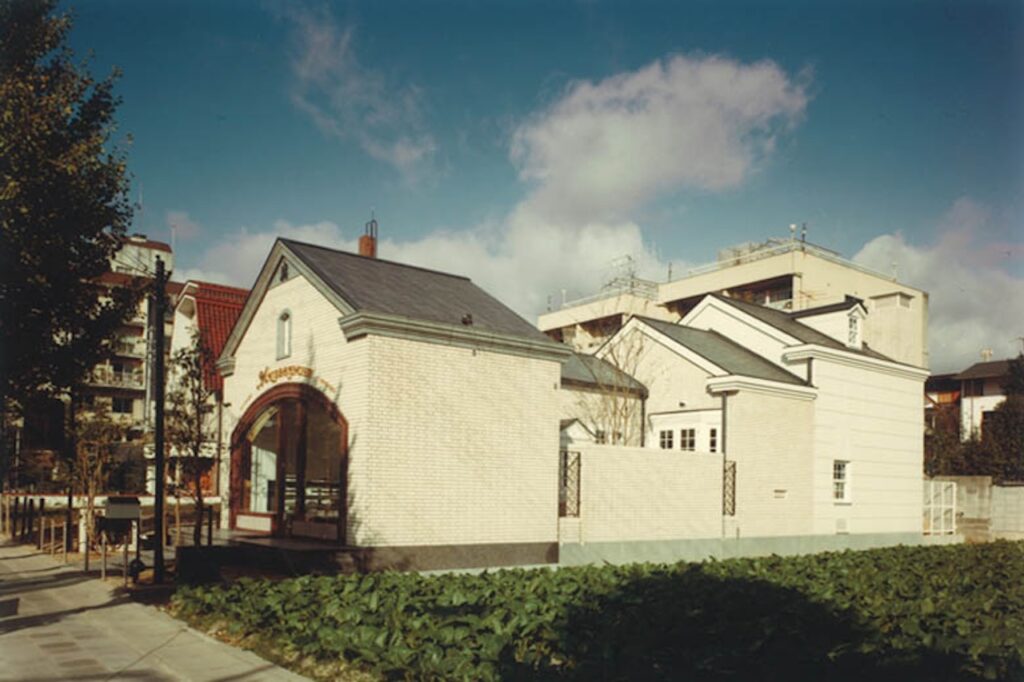
Mar Blanche Kitayama Honten when it was first established.

What was the impetus behind the creation of "tea cakes" from "Mar Blanche"?
Mr. Ezaki: In 2006, Makoto Kawachi, then president and current chairman, asked me to create a confectionery that would evoke the image of Kyoto. He gave me the idea of putting white chocolate between two pieces of langdosha made with matcha green tea.
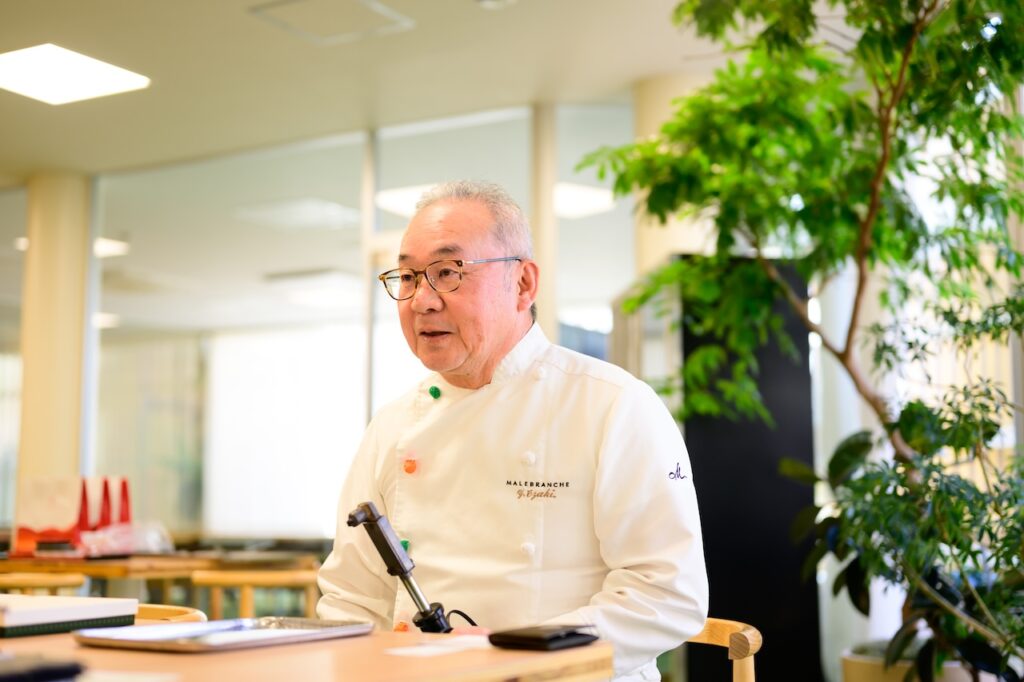

Matcha is relatively easy to use in fresh cakes, but when it comes to baked goods, it is difficult to bring out its flavor and color. It was extremely difficult to bake langue d'ocha, which is usually browned on the edges, to a beautiful green color on all sides and to convey the matcha flavor directly without losing the flavor of the baking process. After experimenting with various methods, we broke the common practice of baking langue d'ocha and came up with a method of baking it at a low temperature.

Three types of branding brands: Kyoto, tea, and confectionery, in reference to "Kyoto's tea confectionery".

Why did you use dark green tea instead of the more common light green tea?
Mr. Ezaki: At first, we started the trial using the lighter type of matcha, but the wife of the current chairman, who had a deep knowledge of the tea ceremony, asked, "Why don't you use dark tea? She was very knowledgeable about the tea ceremony and asked me if I would like to use dark green tea.
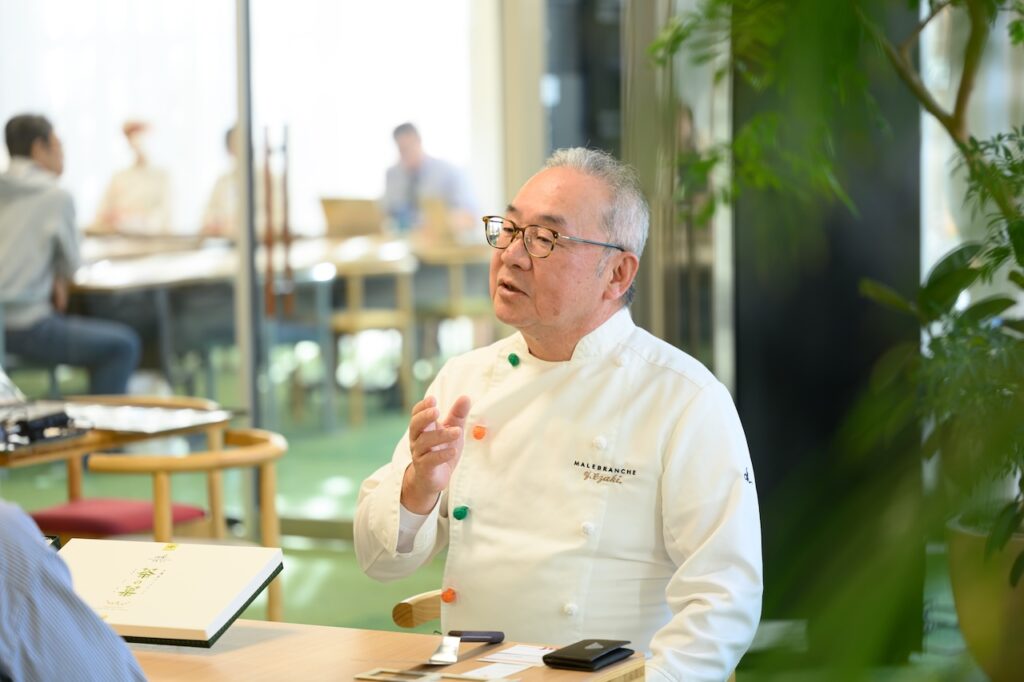

Koicha, a high-quality tea with less bitterness and astringency than thin tea, is costly and its use in confectionery is unheard of and unknown. We consulted with a tea wholesaler in Uji to see if there was a suitable dark tea. As a result, we found that by blending various types of dark tea to give a deeper flavor, we could match it to the Langdosha dough. By changing from light tea to dark tea, the color has improved overwhelmingly and the flavor has become stronger.
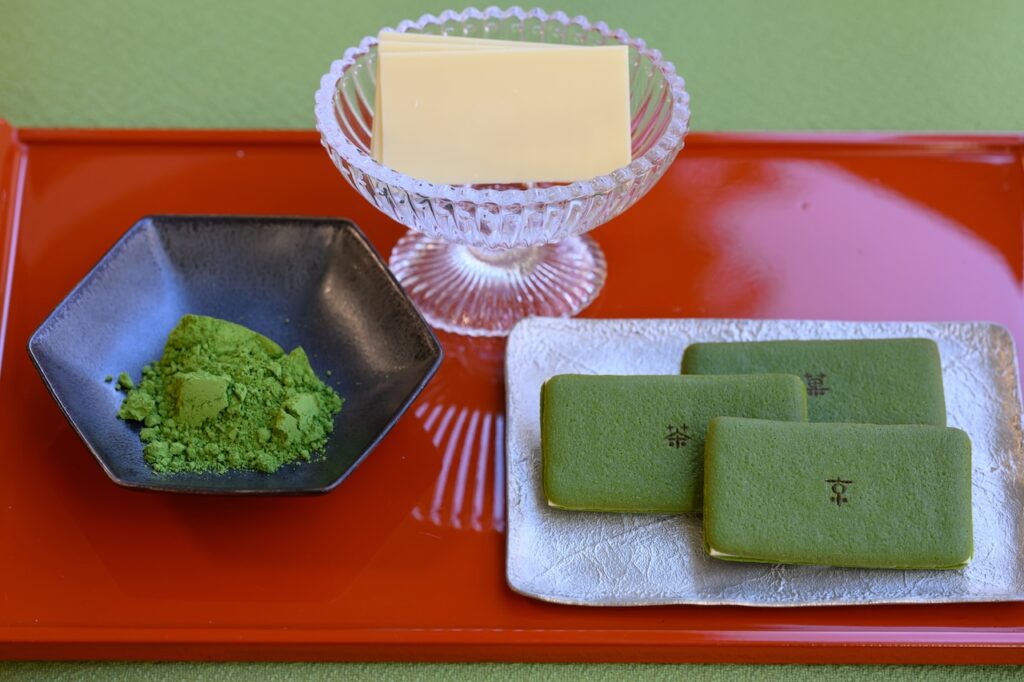

Starting with the crispy texture of the langdosha, the dark tea mellowed in the mouth as it combined with the white chocolate, leaving an aftertaste of dark tea when eaten all the way through. The exquisite aftertaste was unique to dark tea. I was surprised at how rich in flavor dark tea is, an idea that I would not have come up with on my own.
ーーーWere you finding it difficult to combine matcha and white chocolate?
Mr. Ezaki: The main ingredient was the matcha green tea langdosha, and the white chocolate was intended to complement it. In order to find the best match with matcha, I ordered all the white chocolate available at the time, both domestic and foreign.
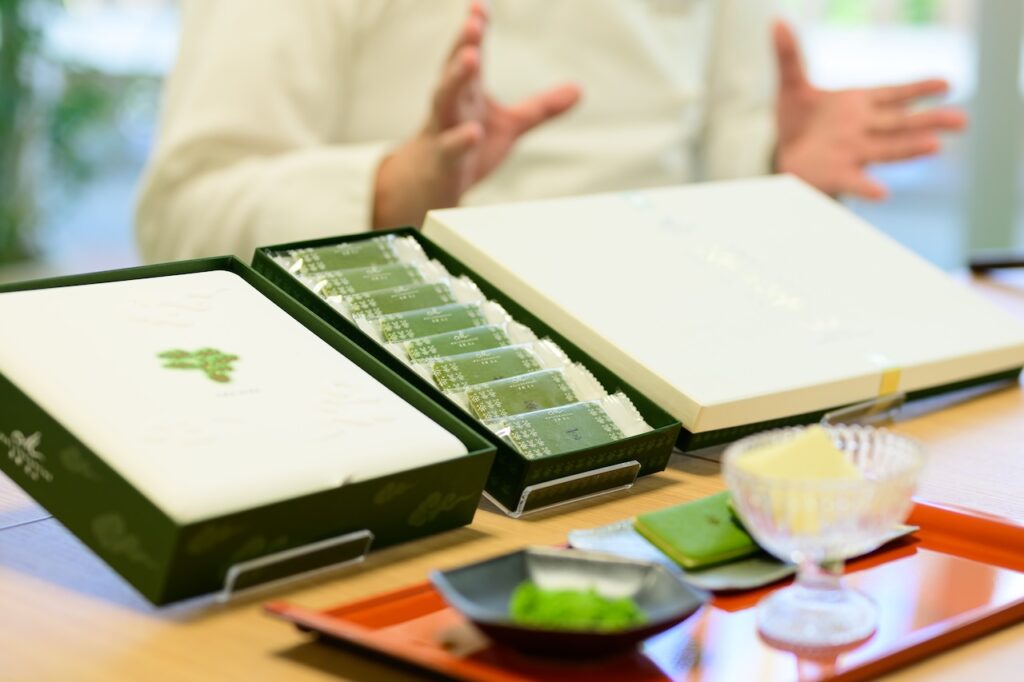

After repeated tastings with matcha langdosha, we created an original recipe for white chocolate. The weight of each piece of chocolate was set at 4 g to balance with the langdosha, with a margin of error of 0.5 g. The chocolate was spread thinly and evenly on a palette, cut with a roller cutter, and each piece was measured.
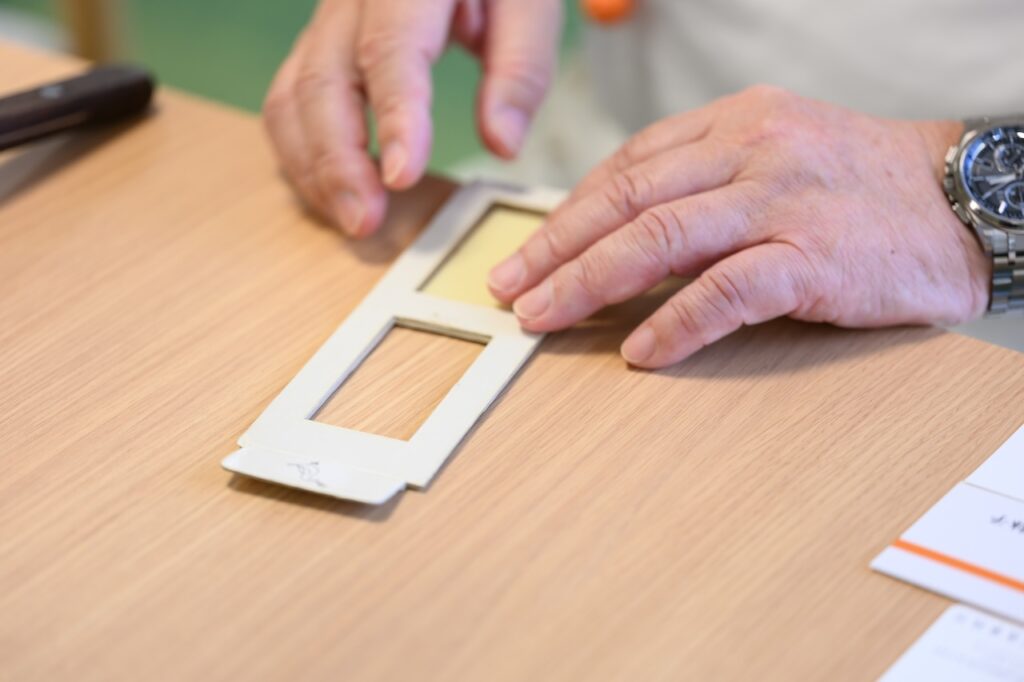

ーーーー So it was done by hand?
Mr. Ezaki/Yes, in the beginning, everything was done by hand. The branding was done when the langdosha was warm enough to be taken out of the oven, and when the temperature reached 26 to 27 degrees Celsius, which was enough to keep the chocolate from melting, the chocolate was inserted and the langdosha was wrapped.
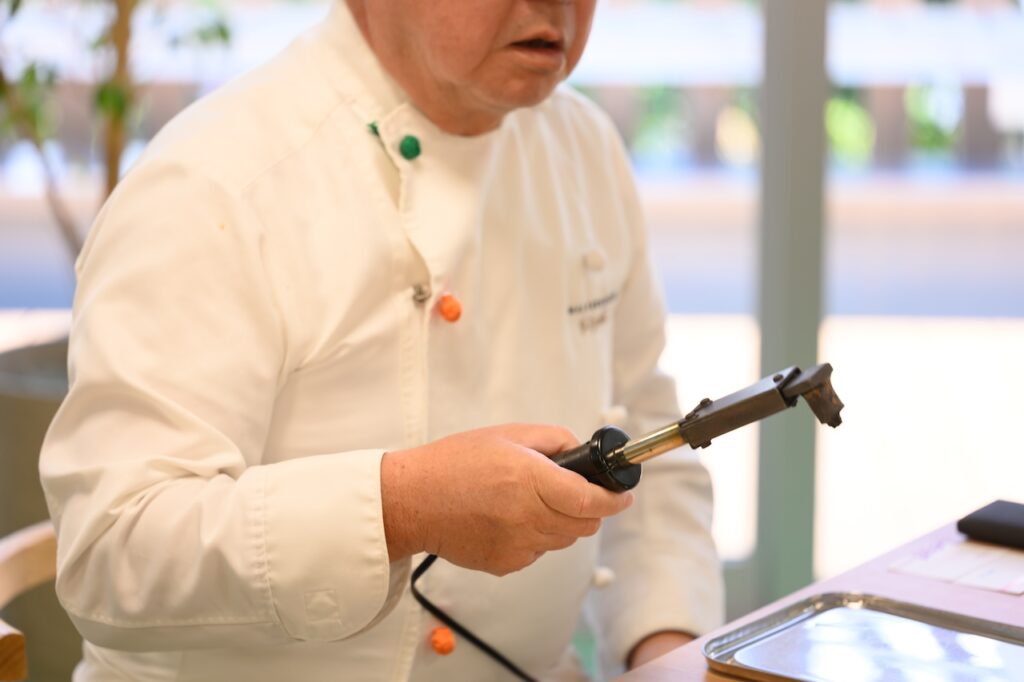

If the timing of branding is off, the branding will smell burnt, and langue d'ocha is sensitive to moisture. In addition, matcha tends to fade easily, so it was important to make the process as smooth as possible. We had to devise various ways to make the branding process more efficient, such as by slightly sloping the table.
ーーーYou have overcome various challenges to create this product, haven't you?
Mr. Ezaki/That's right. At that time, we usually took about six months to develop a new product, but it took us a year and a half to complete "Cha no Hana".
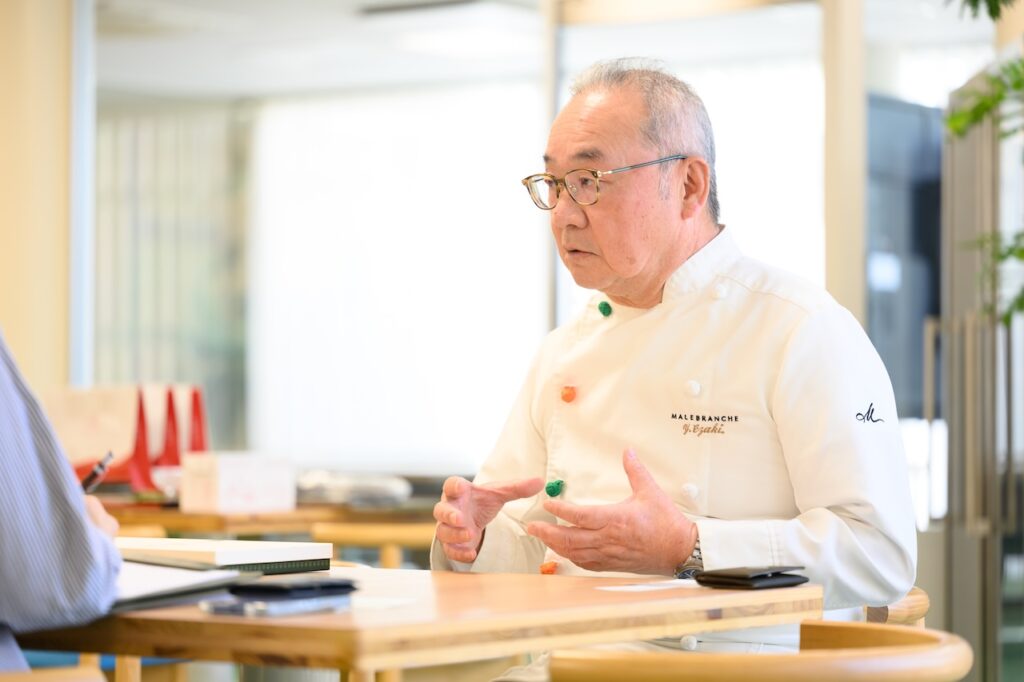

Since there were already so many matcha sweets in the world, some people said, "Why matcha now?" It is true that there were some who said, "Why matcha green tea now? However, the unprecedented combination of dark green tea and white chocolate seemed to be the right choice, and we received many comments such as, "I don't like green tea, but I can eat this! We have received many comments like, "I don't like matcha, but I can eat this! It was widely supported by both the elderly and children.
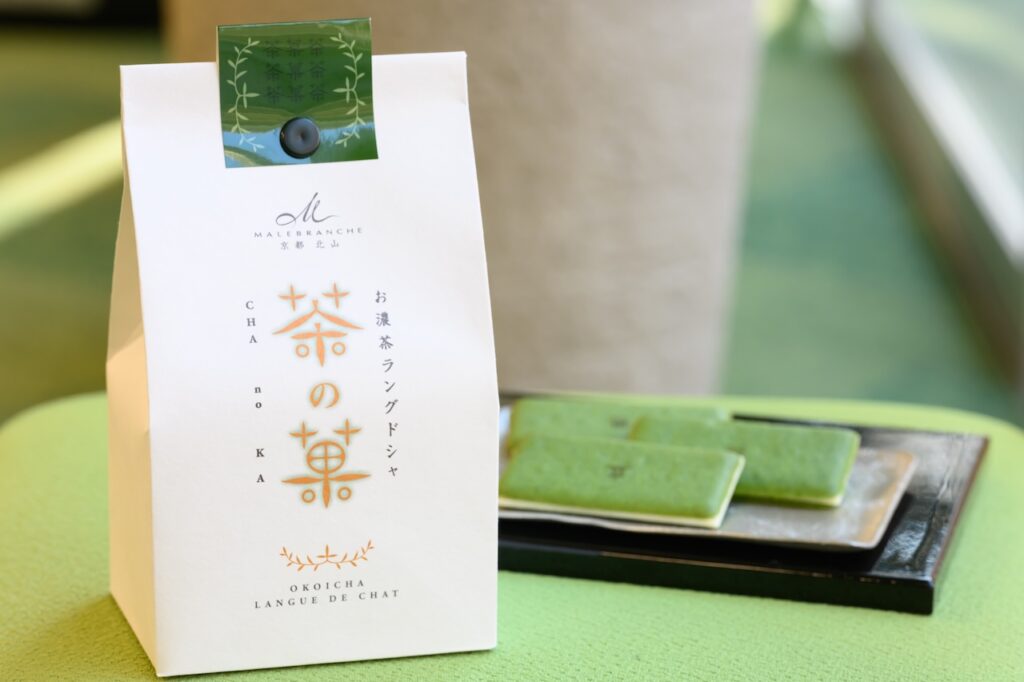
Chanokabi 5-piece set, 810 yen. The simple yet luxurious packaging makes it a perfect gift!

[Mar Blanche used to have a nationwide presence, but withdrew and concentrated on Kyoto when we started selling "Tea Crackers". The reason for this was our strong desire for customers to purchase "Cha-no-ka" as a souvenir of Kyoto.
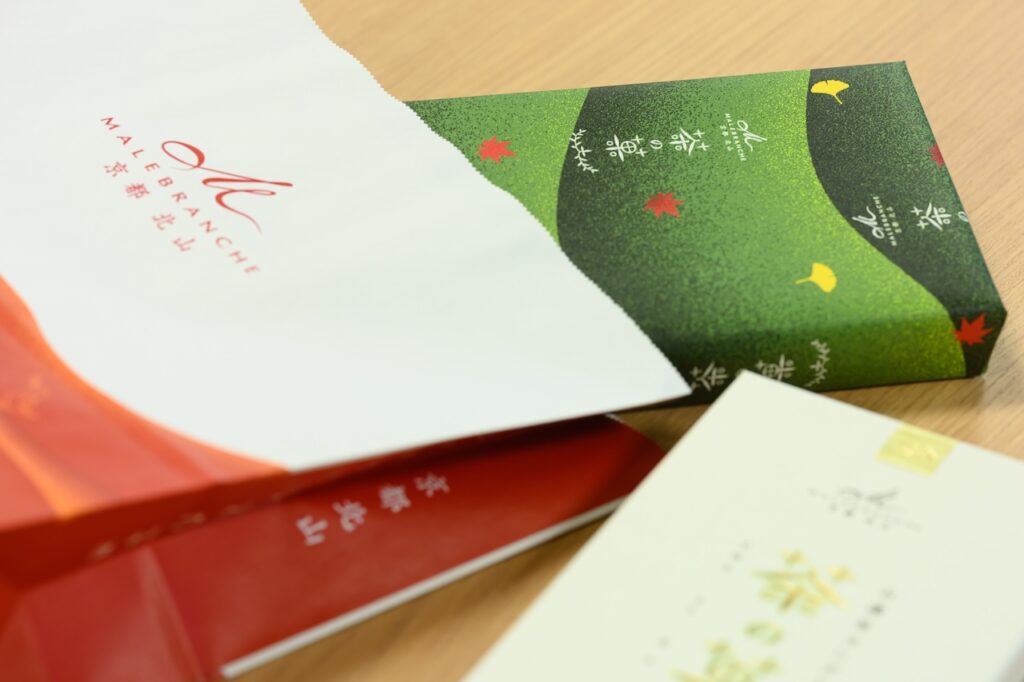
Gorgeous green wrapping paper on an orange paper bag lifts the mood.

What do you pay attention to in order to maintain quality?
Mr. Ezaki: We use high quality Uji tea leaves for our "Cha no Ka," but tea leaves are a natural product. The quality of the tea leaves depends on the climate and other factors of the year. Therefore, we not only make sweets, but also communicate with tea farmers and work as a team to grow tea leaves.
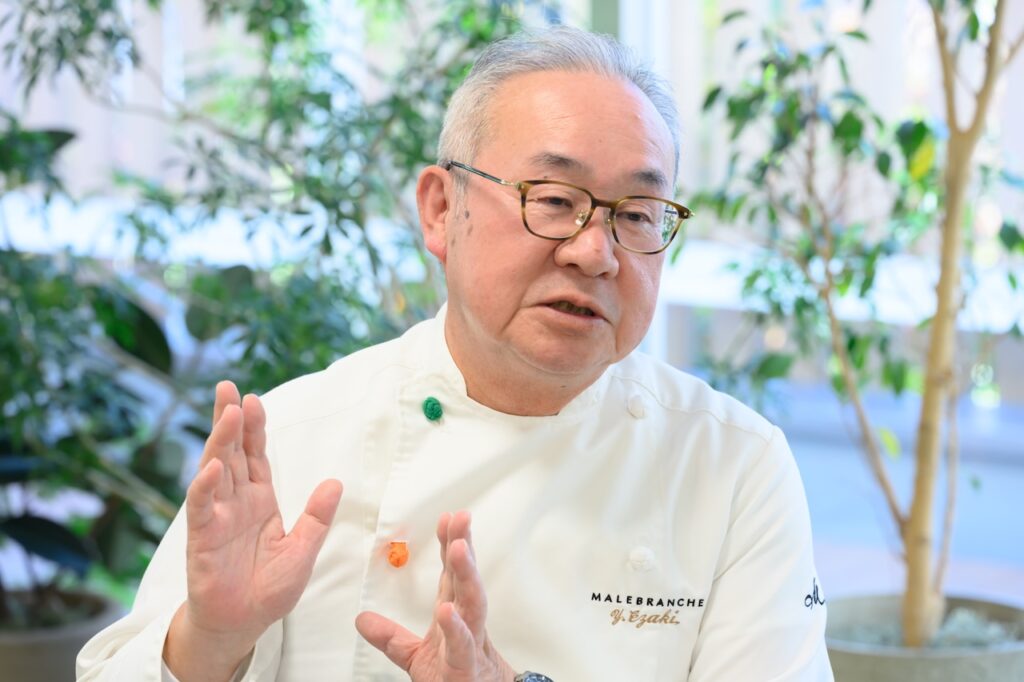

A tea connoisseur blends the tea every year to match the level of "Chanoka," and of course I also check the taste of the tea and use only tea leaves that I am satisfied with. I also carefully grind the tea leaves on a millstone to bring out the full flavor of the tea leaves, and take my time to make the tea thicker.
ーーーThe seasonal "Tea Crackers" series is also popular.
Mr. Akita: We sell "Cool Tea Crackers" in the summer and "Luxury Tea Crackers" in the fall. The tea leaves used in the "Cool Tea Crackers" are different, and white chocolate is kneaded into the dough instead of being sandwiched between the tea leaves. The taste of dark tea can be felt more clearly, and the light texture is perfect for summer.
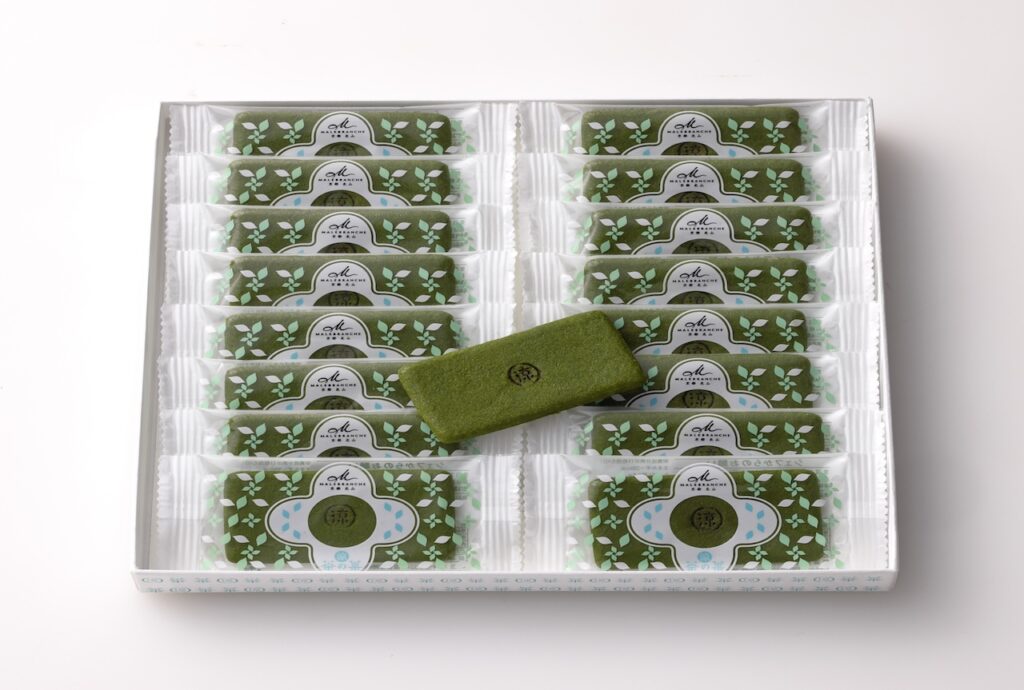
A box (16 pieces) of summer-only cool tea snacks, 2,592 yen

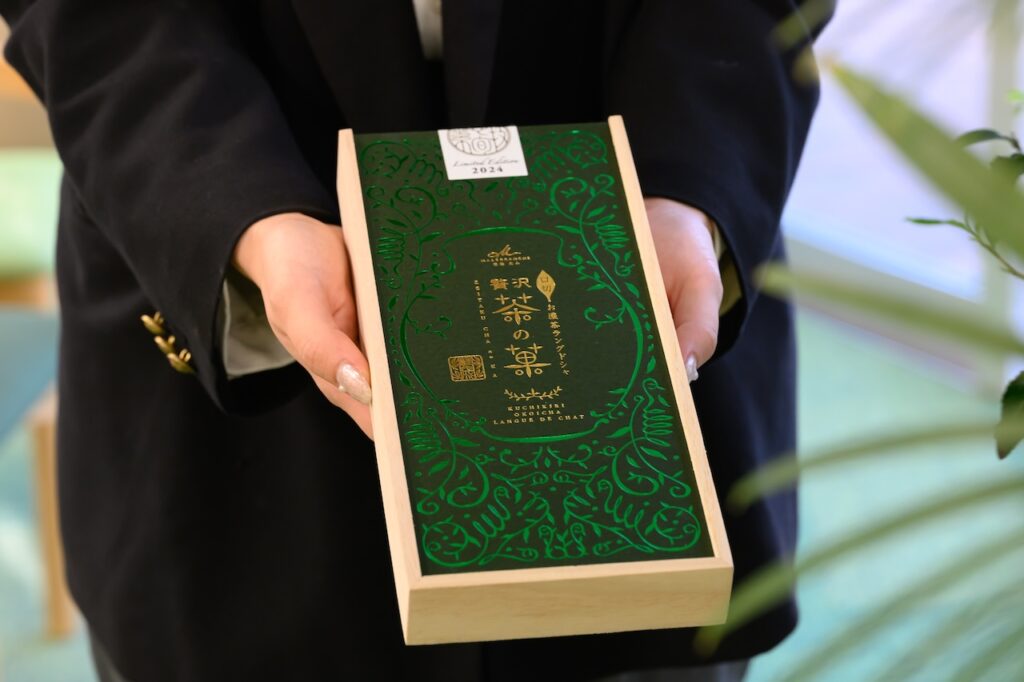
Luxury Chanokwa: 1 box (10 pieces), 3,240 yen. A fan favorite sold only for about a month starting in November each year; sales for 2024 will be discontinued.

Luxury Tea Crackers," now in its fourth year of sale, is sold in connection with the tea ceremony called "Kuchikiri," in which the tea pots are unsealed around the time of the first winter in November after they have been matured for about six months. Because it is made from precious tea leaves with concentrated sweetness and flavor, it is produced in limited quantities.
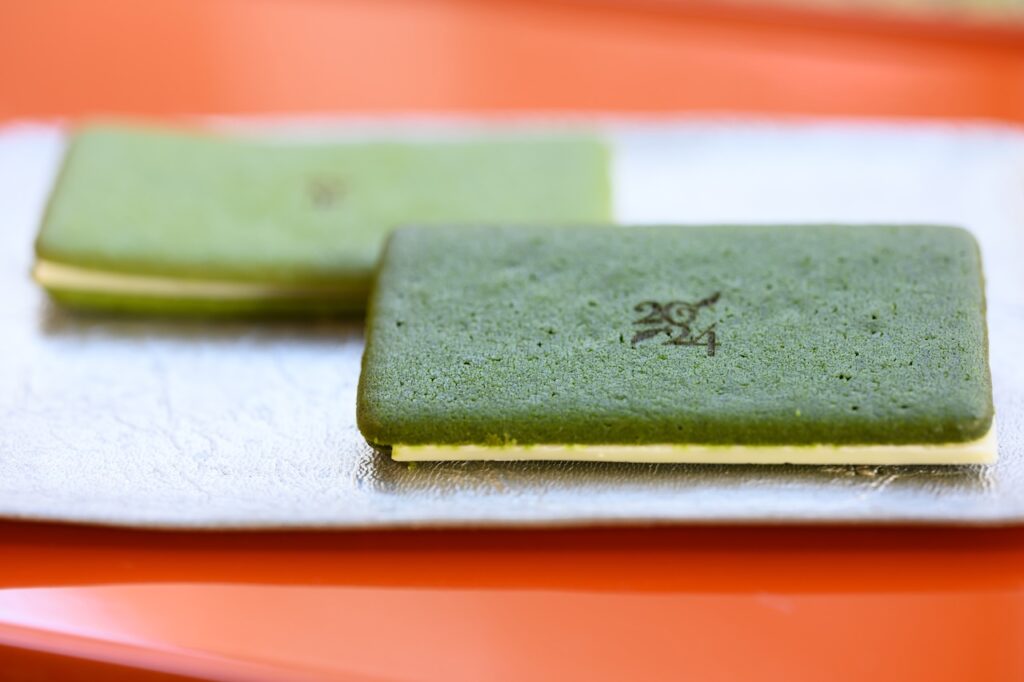
The difference in color is obvious because only the "Sami-dori" variety, which is characterized by its richness, is used in abundance. The tea leaves are harvested in the same year, so the flavor and taste differ slightly from year to year. The vintage of the harvest year is engraved on the tea leaves, adding a touch of romance to the tea.

Some customers look forward to this time of year because the tea is as flavorful as if they were drinking the thick tea itself.
What kind of innovations have you made to the packaging?
Mr. Akita: I wanted the concept of the product to ooze from the package. We chose a simple white lid because we wanted the green "Cha-no-Ka" to look like a tea plantation when opened. I wanted to create a clear image of a tea plantation that I visited when I was developing the "Cha no Kwa" product.
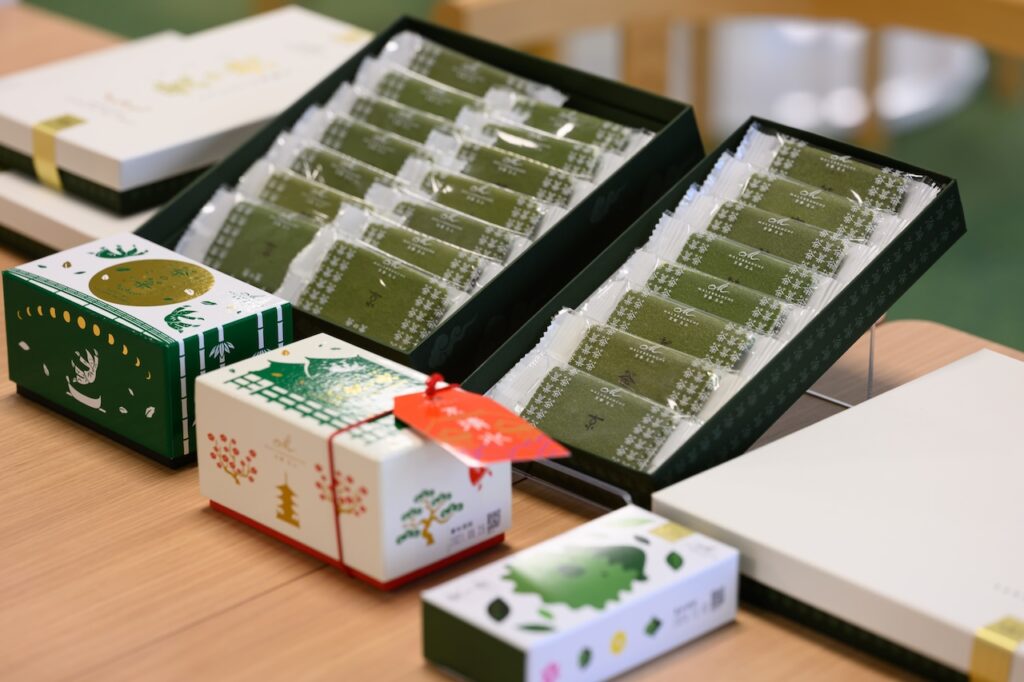

It seems unlikely that a transparent film would be used for matcha confections, whose color is easily affected by light and oxidation, but we wanted to make the first impression when the box is opened.
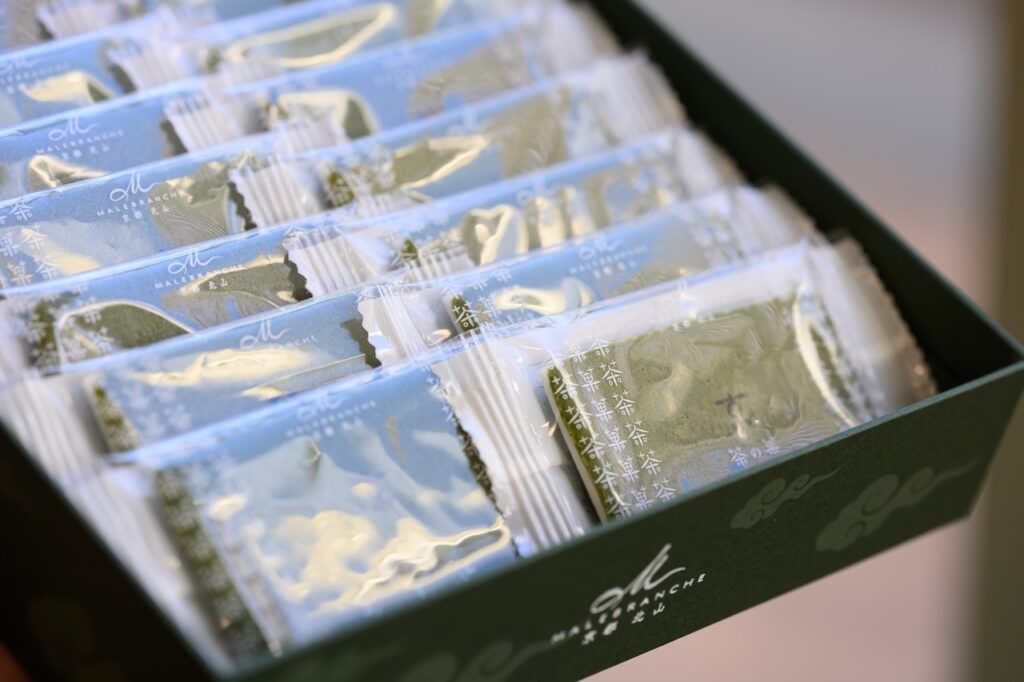

To compensate for this, the outer box is light-shielding. We also pay attention to the texture of the box, and are conscious of its luxury and elegance so that it will be appreciated no matter where you take it or to whom you give it.
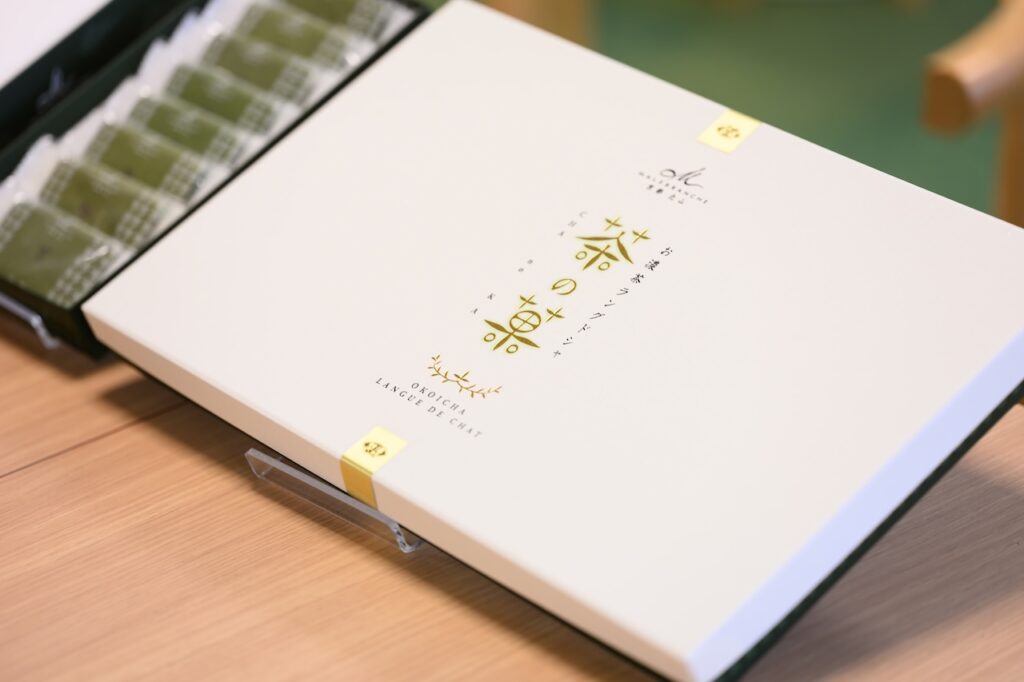

The Kiyomizu-zaka store features an image of Kiyomizu-dera Temple, while the Arashiyama store features an image of the Wataratsuki Bridge.
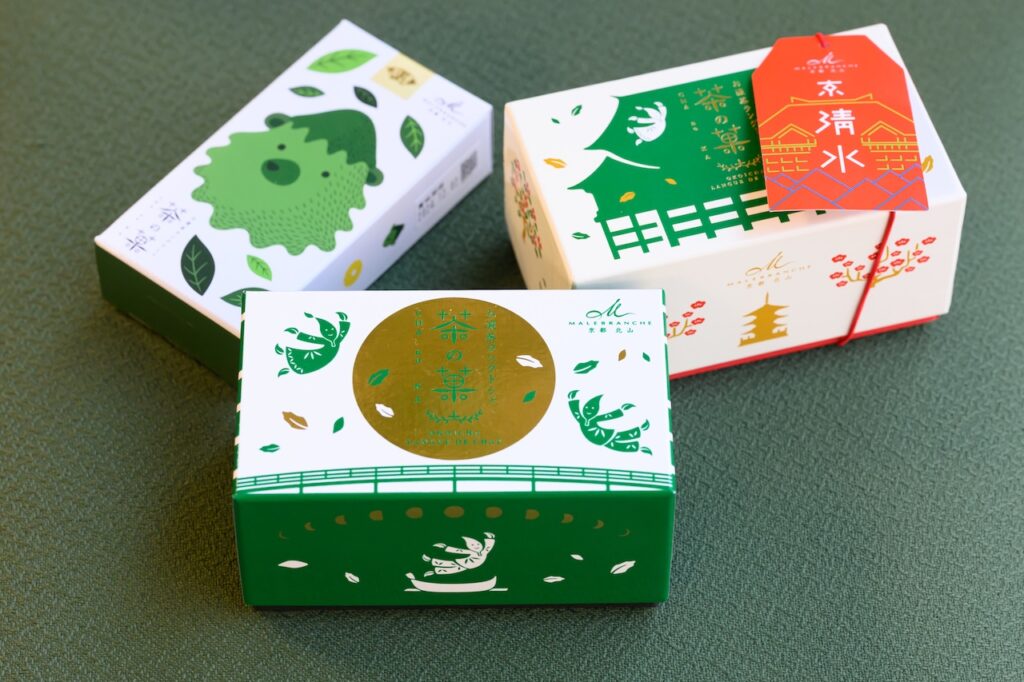
From left to right: Romantic Forest Limited, Arashiyama Store Limited, and Kiyomizu-zaka Store Limited packages. Bring back memories of the place with you.

Please tell us about your future goals.
Mr. Ezaki/Thankfully, production has increased considerably since its launch in 2007, but we hope that we will not lose quality in the future, and that "Cha no Kana" will continue to be a long-loved confectionery in Kyoto.


For me, "Cha no Kana" is the fulfillment of my dream of creating a long-selling product. It is a miracle that so many people are enjoying our products.
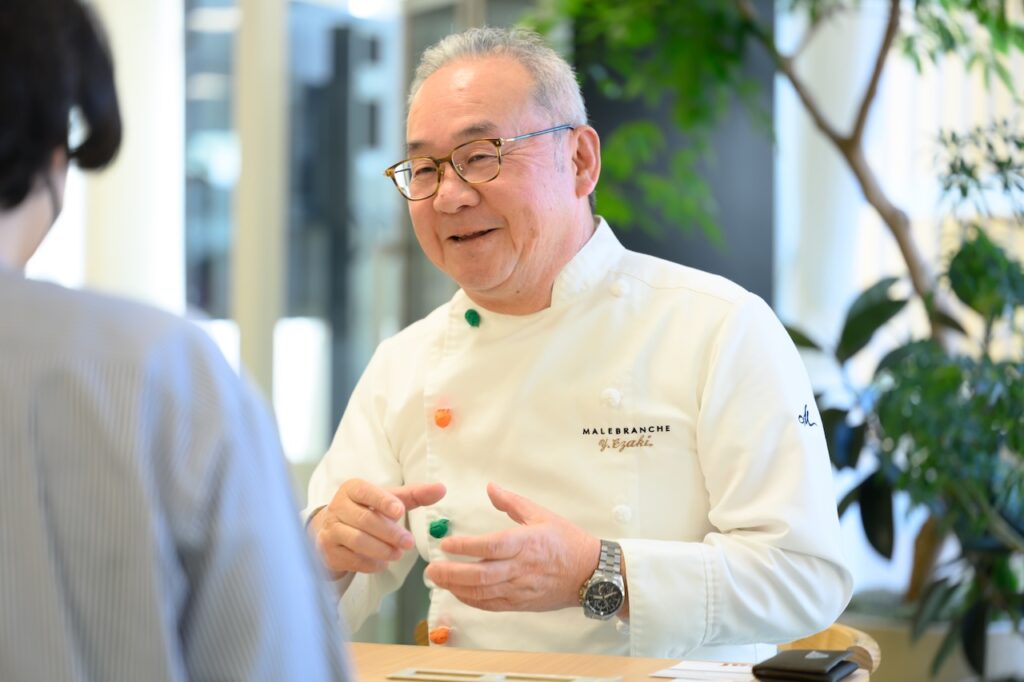

Although all of the staff members interviewed for this report live in Kyoto, I learned many things only after interviewing them, and I was impressed by their commitment to each and every detail.
The fact that the taste and aroma of powdered green tea can be felt in the tea snacks, that they are a beautiful green color, and that they are packaged in a transparent wrapping bag, all of which I had taken for granted, were the result of the development team's ingenuity, persistence, and thoughtfulness. I was convinced once again why there are so many fans of "Cha-no-Ka". I think we can recommend "Cha no Kaca" more proudly than ever before as a souvenir when visiting distant places or when inviting guests. It is also a perfect souvenir to take back home during the year-end and New Year's holidays.
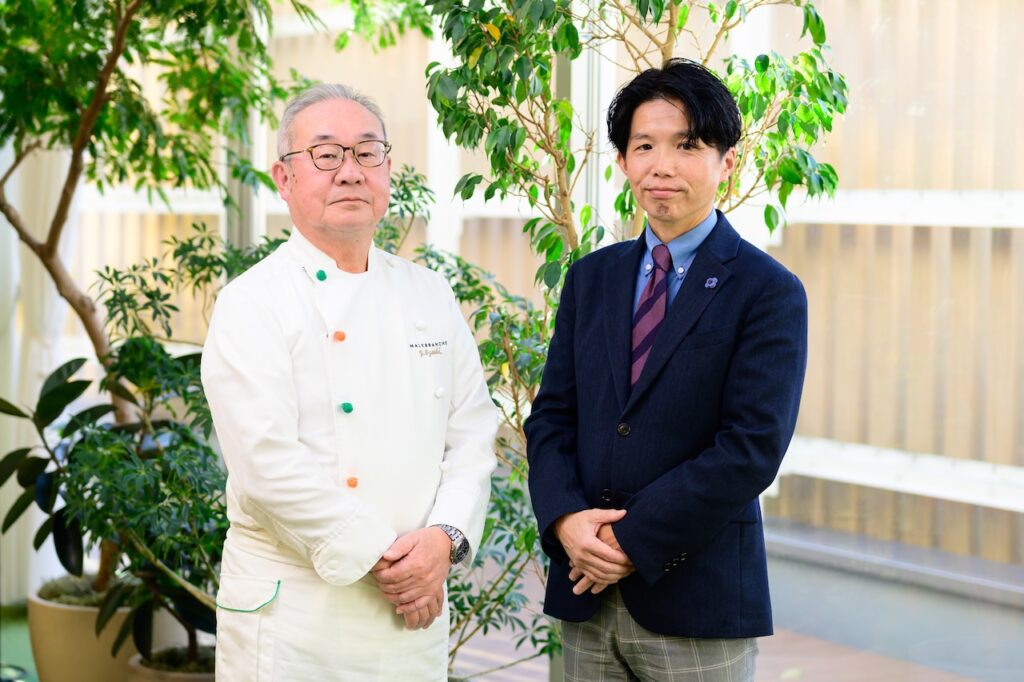
(Left) Special Advisor Executive Chef Yasuhiko Ezaki. After working at a confectionery store in Kobe, he joined Roman Life in 1992. He has 47 years of experience in confectionery. (Right) Mr. Hirokazu Akita, Marketing Department Manager, was born in Hyogo Prefecture. He joined Romantic Life in 2013. His main responsibilities include general planning, sales promotion and public relations, product development, and raw material development.

Over 600 interviews per year! An order site carefully selected by the editors who knows Kyoto and Shiga.
nowOfficial LINE friend registration500 yen OFF coupon is being issued!
Distributed every Friday morning at 8:00 am! From new restaurant information to event information that we want to share with you, We deliver articles about Kyoto that are useful to know. About 20,000 people have registered.Click here to add a friend!
 News
News Feature article
Feature article Featured event
Featured event